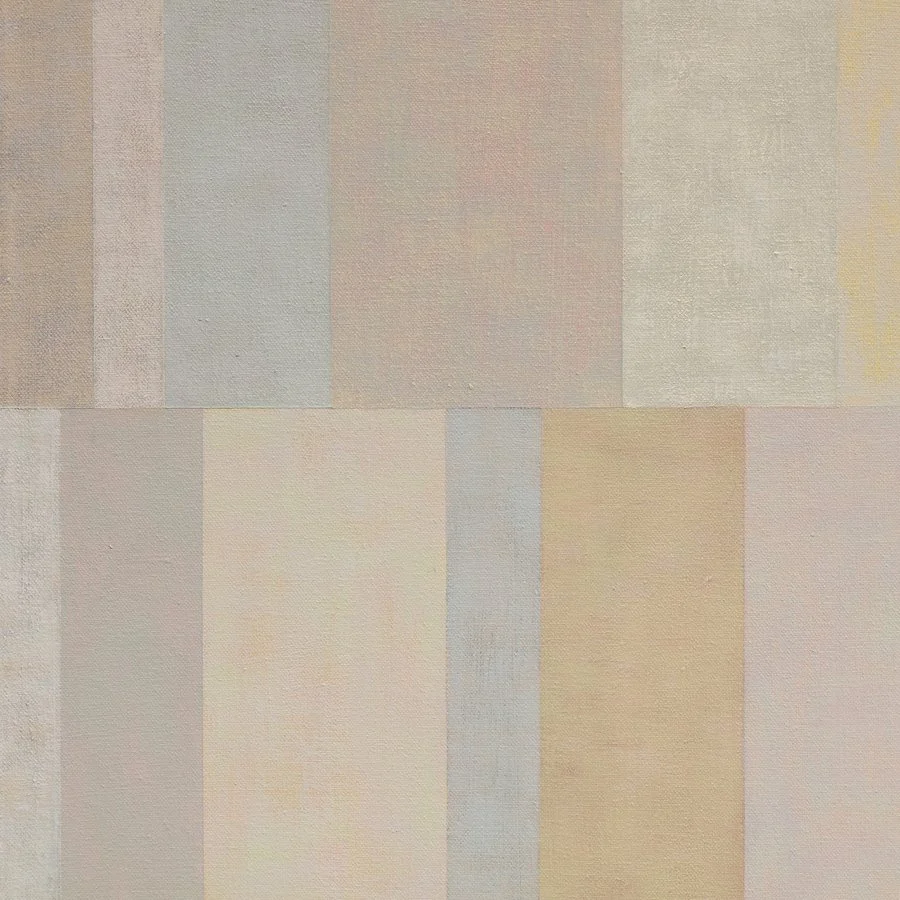 OK, I can't take it anymore, it's time to talk about Bacon. The whole purpose of the New York trip was to see the Met's Francis Bacon retrospective, and it certainly didn't disappoint. It's impossible to blog about it all, but there were certainly some major ideas that emerged for me.
OK, I can't take it anymore, it's time to talk about Bacon. The whole purpose of the New York trip was to see the Met's Francis Bacon retrospective, and it certainly didn't disappoint. It's impossible to blog about it all, but there were certainly some major ideas that emerged for me.Firstly, those damn gold frames. Bacon required all of his works to be framed in gilt gold frames with glass - the glass being the most unusual aspect. Seeing a painting in the flesh is, quite literally, being able to see the flesh of the paint. By putting his work behind glass, it was hard to see some of the subtleties of the dark glazes, to feel the visceral swipes of thick paint, to savor the soft gloss of the paint's skin. The exhibit explained that he primarily worked from photographed images, and since my own work deals with the relationship between painting and photography, the way I saw it, he had begun by transforming a photograph into a painting, and then by framing it behind glass, had basically transformed it back into a photograph. The final framed object was experientially a photograph of a painting. Also, I think it's interesting that although Bacon's instructions were strict with respect to framing his work for display purposes, the reproductions of his work are of his unframed paintings. Since Bacon worked from reproductions, he was certainly very conscious of this secondary life his paintings would have, and yet he did not require the reproductions to be of his framed work - which just reaffirms to me that when the paintings were viewed in reproduction as actual photographs of the work, the frame and glass just became redundant.
Secondly, there is no denying that Bacon quite willingly, and regularly, went to his dark side. A very dark side. Throughout the summer I have been becoming more and more conscious of how cerebral my work is, and wanting, with some trepidation, to explore a more explicitly sensual/emotional content. Working with Nitasha and Rebecca in the studio this summer has only strengthened this desire - their work is raw, intense, brave. It's making me feel like a wimp, over-thinking everything. Although art always exposes something of who you are, and while I have come a long way this year, I think I am still very much in hiding. And I think it has been easier to hide in landscapes and abstraction. But once you start using the figure, more and more becomes exposed. As Nitasha and I drooled through the Bacon exhibit and then trolled the New York bookstores looking at endless numbers of art books, Nitasha kept commenting that the paintings and images that struck me, that I kept being drawn to, had quite a dark sensibility. In the past year, my work has slowly been revealing a more romantic, feminine desire, and now it seems a darker side is starting to come into the mix. Certainly, if anything is going to bring out your desire to revel in the dark side, it's a Francis Bacon painting.
Thirdly, a more minor point, perhaps, but something I couldn't stop thinking about as I looked at Bacon's paintings. His distortion of the figure is incredibly sculptural, as if he had made a plasticine maquette of the figure and then twisted and pulled it into the form that he wanted to paint. Picasso, Matisse, de Kooning, all painted the figure and yet explored their ideas about the body, form and gesture in sculpture as well. The more I looked at Bacon's paintings, the more I could not fathom how he had not been drawn to expressing himself through a sculptural medium. It began to peak my curiosity as to how I might approach my ideas in sculpture. Looking at works by artists such as Petah Coyne, Sherry Boyle, Michele Oka, I have to believe my ideas have a place in the third dimension.
The final element of Bacon's show that has stayed with me (beyond the sheer power of the paintings themselves, of course) is the small display they had of Bacon's source materials. Bacon once said "Images breed images in me." Actually seeing the images that had resulted in the paintings was a fascinating peek into Bacon's creative process. Although there were no sketches, his works look as though the impeccable compositional structures were well thought out before paint ever touched the canvas. But it was very inspiring to see how these paintings of "genius" were sourced largely from very accessible, unremarkable images. With the cynical approach to the appropriation of images in post-modernism, it can be intimidating to rely on reproductions for source materials. There is a stigma somehow of a kind of failure of the imagination. Artists like Bacon prove otherwise.
There is no question that the Bacon show was a mass of inspiration for my studio practice, but at the end of day, most importantly, experiencing the show was a thrill, a privilege, a sheer heart-wrenching pleasure.


